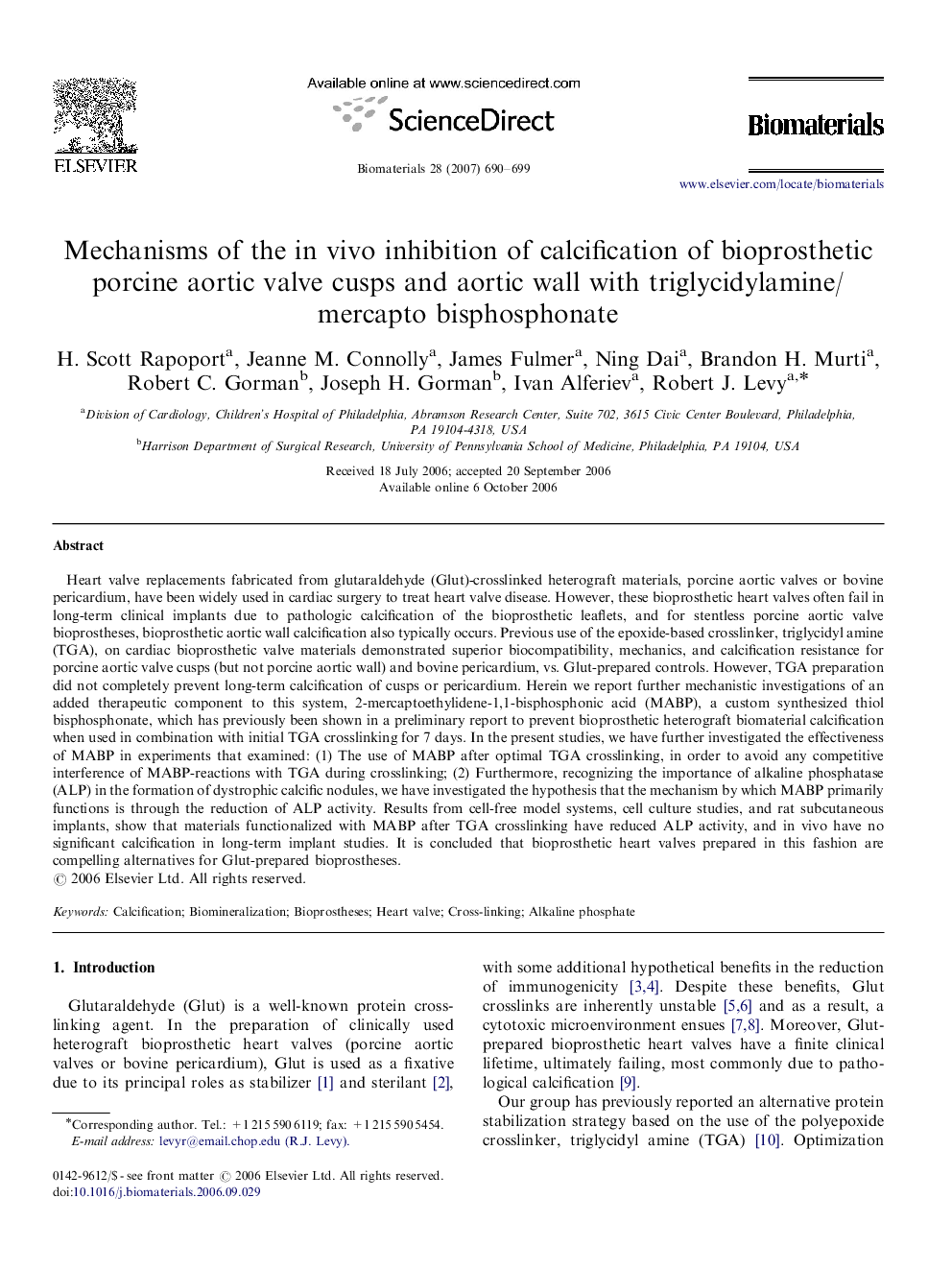| کد مقاله | کد نشریه | سال انتشار | مقاله انگلیسی | نسخه تمام متن |
|---|---|---|---|---|
| 11151 | 721 | 2007 | 10 صفحه PDF | دانلود رایگان |

Heart valve replacements fabricated from glutaraldehyde (Glut)-crosslinked heterograft materials, porcine aortic valves or bovine pericardium, have been widely used in cardiac surgery to treat heart valve disease. However, these bioprosthetic heart valves often fail in long-term clinical implants due to pathologic calcification of the bioprosthetic leaflets, and for stentless porcine aortic valve bioprostheses, bioprosthetic aortic wall calcification also typically occurs. Previous use of the epoxide-based crosslinker, triglycidyl amine (TGA), on cardiac bioprosthetic valve materials demonstrated superior biocompatibility, mechanics, and calcification resistance for porcine aortic valve cusps (but not porcine aortic wall) and bovine pericardium, vs. Glut-prepared controls. However, TGA preparation did not completely prevent long-term calcification of cusps or pericardium. Herein we report further mechanistic investigations of an added therapeutic component to this system, 2-mercaptoethylidene-1,1-bisphosphonic acid (MABP), a custom synthesized thiol bisphosphonate, which has previously been shown in a preliminary report to prevent bioprosthetic heterograft biomaterial calcification when used in combination with initial TGA crosslinking for 7 days. In the present studies, we have further investigated the effectiveness of MABP in experiments that examined: (1) The use of MABP after optimal TGA crosslinking, in order to avoid any competitive interference of MABP-reactions with TGA during crosslinking; (2) Furthermore, recognizing the importance of alkaline phosphatase (ALP) in the formation of dystrophic calcific nodules, we have investigated the hypothesis that the mechanism by which MABP primarily functions is through the reduction of ALP activity. Results from cell-free model systems, cell culture studies, and rat subcutaneous implants, show that materials functionalized with MABP after TGA crosslinking have reduced ALP activity, and in vivo have no significant calcification in long-term implant studies. It is concluded that bioprosthetic heart valves prepared in this fashion are compelling alternatives for Glut-prepared bioprostheses.
Journal: Biomaterials - Volume 28, Issue 4, February 2007, Pages 690–699